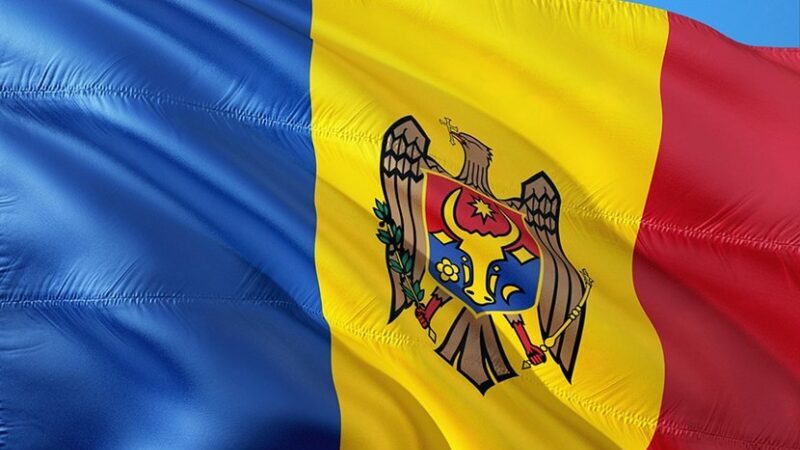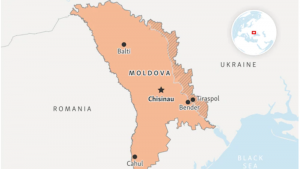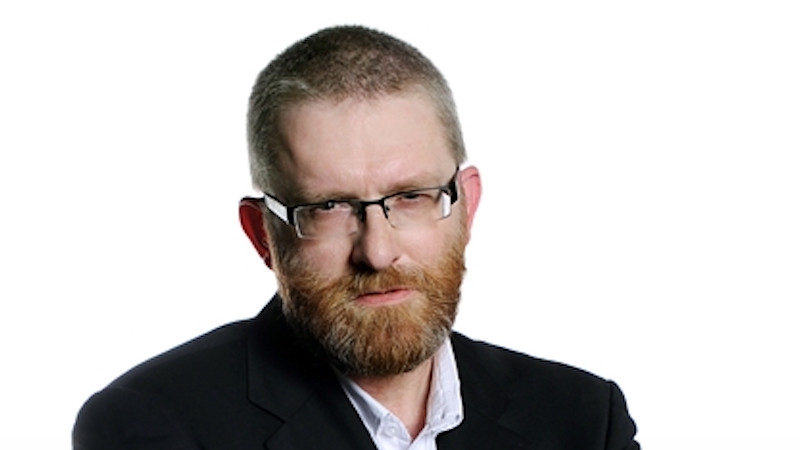

By Peter Rough and Luke Coffey
(FPRI) — Russia’s large-scale invasion of Ukraine was a seismic event for the Republic of Moldova. The war upended Chișinău’s long-held belief that constitutional neutrality would protect the country. Additionally, the invasion focused Brussels’s attention on Moldova, which the European Union has often regarded as an afterthought.
Moscow’s war catalyzed Moldova’s politics and forced Chișinău and Brussels to make fundamental choices about their future relationship on an accelerated timetable. If Russia hadn’t launched its full-scale invasion, the EU would have probably not invited Moldova to open accession talks so quickly.
Important elections in Moldova and a perilous situation in Ukraine ensure that 2024 will be a pivotal year on Chișinău’s path toward Western integration. United States and European policymakers should proactively shape an outcome that benefits both Moldovans and the Euro-Atlantic community.
Moldova: A Brief Overview
Moldova is a small country in Eastern Europe about the size of Maryland (see map 1). It is sandwiched between Ukraine to the east and Romania to the west. Moldova has a population of 3.3 million people, slightly smaller than the city of Los Angeles. Over the centuries the territory of present-day Moldova has seen many rulers and has been a part of the Russian Empire, the Ottoman Empire, and the Polish-Lithuanian Commonwealth. After the Crimean War (1853–56), it even came under the control of an international protector. In 1918, in the chaotic aftermath of the Russian Revolution and amid the Russian Civil War, most of modern-day Moldova was unified with Romania. During World War II, as part of the security pact between Nazi Germany and the Soviet Union, the USSR established the Moldavian Soviet Socialist Republic in 1940. The USSR continued to govern Moldova until it declared its independence in 1991. Today, Moldova is the poorest country in Europe, but is independent.
Still, as former Soviet republics, Moldova’s and Ukraine’s fates are linked. Moldova will never be completely independent and sovereign if Ukraine is under Russian control. As such, Moldova has felt the impact of Russia’s invasion of Ukraine acutely.;The United Nations estimates;that more than one million Ukrainians have entered Moldova since February 2022. Currently, about 118,000 remain—a large number for a small country.1Moldova has only one port, Giurgiulești, which is on the Danube River. From there it is possible to see and hear Russian drone attacks in Ukraine. Moldova also relies on the Ukrainian port of Odesa for access to the outside world. To a significant degree, whoever controls Odesa controls the fate of Moldova.
 Location of Moldova’s breakaway region Transdniester (Transnistria). Credit: RFE/RL Graphics
Location of Moldova’s breakaway region Transdniester (Transnistria). Credit: RFE/RL Graphics
Practically speaking, Russia likely sees the reoccupation of Moldova as the final phase of its invasion of Ukraine. Moldova’s most recent defense strategy, published in December 2023, states that “the Russian Federation in the near future will not abandon its hostile actions against Moldova.” The document, adopted by Moldova’s parliament, calls on Moldova to deepen relations with Romania, the US, the EU, and the North Atlantic Treaty Organization (NATO). But the strategy does not explicitly call for a change to Moldova’s neutral status.
That neutrality is enshrined in Article 11 of the Moldovan Constitution, which states:
(1) The Republic of Moldova proclaims its permanent neutrality.
(2) The Republic of Moldova does not admit the stationing of any foreign military troops on its territory.
Article 142 of the constitution;states that Moldova’s current position of “permanent neutrality can be revised only through a national referendum.”
A Year for Choosing
In June 2022, Moldova became an EU candidate country, and in December 2023, the European Council opened accession negotiations with Chișinău. On October 20, 2024, Moldovans will go to the polls to choose their next president and vote in a referendum to amend their constitution to someday join the EU. This will be the first test of the country’s constitutionally mandated neutrality.
Moldova’s political situation is charged and subject to significant pro-Russian influence. Three major groups currently compete in its parliament: the Bloc of Communists and Socialists; the Party of Action and Solidarity (PAS), led by Moldovan President Maia Sandu; and a group of politicians backed by Israeli-born and US-sanctioned oligarch;Ilan Shor, who fled to Israel following Sandu’s election in 2020 and has since acquired Russian citizenship. Sandu is pro-West; the other two movements are pro-Russia.
Around 11 percent of Moldovans are native Russian speakers.;An estimatedone-third of the country hold pro-Russian views and will not vote for a party that is not at least tacitly pro-Russia. Another third of Moldovans are very pro-EU. This seesaw battle for the heart and soul of Moldova makes it a frontline state in the contest between Russia and the West.
The October referendum on EU membership is the centerpiece of Moldova’s internal struggle between pro-Russian and pro-Western elements. Although the referendum will likely pass, the pro-Western incumbent government wants this outcome with a healthy majority and large voter turnout to confer legitimacy. Moreover, the current government hopes to carry momentum from this year’s presidential election and referendum into next year’s parliamentary elections.
Moldova’s Security Outlook
Russia’s full-scale invasion of Ukraine has presented a continuous, and at times existential, threat to Moldova’s stability. As Moldovan Foreign Minister;Mihai Popșoi recently said, “[these] past two years, without exaggeration, have been by far the most difficult in the past 30 years.”
Had Russia captured Odesa in early 2022 as it had planned, there is little doubt it would have continued on to Ukraine’s Budjak region, which borders Moldova’s pro-Russian area of Gagauzia. Moscow’s troops could have then linked up with Russian forces stationed in the breakaway Moldovan territory of Transnistria, placing Russian troops on the Romanian border. This would have been a severe threat, as Romania is a NATO member state and home to a sizeable US military presence. This includes a land-based missile defense facility at Deveselu and an air base at Mihail Kogalniceau, which is being upgraded into the alliance’s largest complex in Europe.
At a minimum, a Russian invasion of Moldova would have created a humanitarian crisis that would have forced hundreds of thousands of Moldovans, many of whom have Romanian passports, to flee to Romania. It is not unrealistic to think that a Russian advance into Moldova could have triggered a Romanian counter-intervention, with obvious implications for NATO. In such a scenario, Moldovans may have even pushed for unification with Romania.
Thankfully, Russia’s plans were never realized. A staunch Ukrainian defense outside Mykolaiv in spring 2022 and a successful counteroffensive to liberate Kherson in fall 2022 pushed Russian forces far from Odesa. Meanwhile, Ukraine’s liberation of Snake Island in the Black Sea and Ukrainian forces’ major blows against Russia’s Black Sea Fleet have made a Russian amphibious landing at Odesa or Budjak impossible.
As a result, instead of using the approximately 1,500 troops stationed in Transnistria to threaten Moldova, Russia must take pains to protect that isolated and vulnerable garrison from Ukrainian attacks. Moscow has threatened Moldova with strategic consequences, which likely means air strikes. Moldovan and US authorities take that threat very seriously.
Until recently, Moldova rarely prioritized improving its military capabilities. But this is slowly changing. Today, Chișinău participates in several Western security arrangements. This year marks three decades of Moldovan participation in the Partnership for Peace with NATO. Moldovan forces also contribute to the NATO-led international peacekeeping force in Kosovo (KFOR) and the Italian contingent at the United Nations Interim Force in Lebanon (UNIFIL), and they are working to improve their interoperability with NATO forces.
While no Moldovan official is talking about NATO membership, Ukraine’s early success around Odesa has given Moldova space to rethink its security and defense capabilities and reform them accordingly. Moldovan security reforms are concentrated in three areas: civil society measures modeled on Estonia’s highly developed resilience and resistance plans; short-range air defenses and electronic warfare capabilities for anti-drone operations; and Western-designed artillery with greater range than Soviet-legacy systems.
The US-Moldovan defense relationship has been modest in recent years, but this is also changing. Moldova has sent small contingents of soldiers to US-led training exercises in Europe. The North Carolina National Guard and the Armed Forces of Moldova have conducted joint training under the auspices of the State Partnership Program. Washington has long provided Chișinău with foreign military financing (FMF), and the Russian invasion of Ukraine has heightened the urgency of that assistance. As recently as three years ago, any military cooperation between Moldova and the US would have been quiet, even surreptitious. But in Moldova last fall, the American 101st Airborne Division openly conducted joint exercises with Moldovan forces.
Moldova regularly ranks as one of the poorest countries in Europe. As such, it cannot make big investments in its defense. (In addition to FMF from the United States, the European Peace Facility has helped defray some of the costs of Moldova’s military upgrades.) Moreover, the Moldovan public is skeptical that it can withstand the Russian military, and wonders whether it is prudent to fund its military with money that could otherwise flow into state welfare programs. Still, increased cooperation with the West is militarily and diplomatically beneficial for Moldova.
Russia’s Hybrid War
The European Centre of Excellence for Countering Hybrid Threats;in Helsinki, Finland, defines hybrid warfare as “coordinated and synchronized action, that deliberately targets democratic states’ and institutions’ systemic vulnerabilities, through a wide range of means,” and “activities that exploit the thresholds of detection and attribution, as well as the different interfaces (war-peace, internal-external security, local-state, and national-international).”The aim of hybrid warfare, according to the center, is to “influence different forms of decision-making at the local (regional), state, or institutional level to favor and/or gain the agent’s strategic goals while undermining and/or hurting the target.”2
Russia’s actions in Moldova fit this definition of hybrid warfare. The first few months of 2024 alone offer a chilling snapshot of the hybrid tactics Moscow has employed against Chișinău:
January 2024;
- Russia’s Ministry of Foreign Affairs summoned Moldova’s ambassador to complain about “unfriendly acts” and “aggressive anti-Russian declarations” by the Moldovan government.
- Russia’s Ministry of Foreign Affairs declared that Moldova is becoming “a springboard that will be used to ‘destroy’ Russia.”
- Russia banned seven Moldovan journalists from entering Russia, declaring them “enemy media.”
February 2024
- Transnistria’s Congress of Deputies met for the first time since 2006 and released a statement calling on Russia “to implement measures to protect Transnistria in the face of the increasing pressure applied by the Republic of Moldova.”
- Fragments of Iran-supplied Russian Shahed drones were found in the Moldovan town of Etulia near the border with Ukraine.
March 2024
- The governor of Gagauzia, Eugenia Gutul, visited Moscow and met with senior Russian politicians, including President Vladimir Putin. During her meetings she accused the central government in Chișinău of “oppressing” the rights of the Gagauz people. According to Gutul, Putin “promised to extend support to Gagauzia and the Gagauz people in upholding our legal rights, our authority and positions in the international arena.”
- In violation of international law, Russia opened polling stations in Transnistria for the 2024 Russian presidential elections. Moldova expelleda Russian diplomat over this issue.
- Footage emerged on social media showing a drone destroying a Mi-M8T helicopter at an air base outside Transnistria’s de facto capital of Tiraspol. Transnistria’s authorities quickly blamed Ukraine for the attack. Moldova and Ukraine denied these allegations and argued that the explosion was staged. Another incident followed in early April. Transnistria reported that a drone had lightly damaged a radar station close to the border with Ukraine. Moldovan officials described the incident as part of “a pattern of provocations” intended to “incite panic and tension.”
April 2024
- Moldovan authorities confiscated more than $1 million from pro-Russian opposition politicians who had likely intended to bribe voters.
Past is prologue. As;the United States, Canada, and United Kingdom warnedthis month, “Russian actors are carrying out a plot to influence the outcomes of Moldova’s fall 2024 presidential election.” During the leadup to Moldova’s October elections, expect Russia to pursue four hybrid attack vectors simultaneously:
1. Attack and discredit President Maia Sandu.;The Russians will use all available tools to try to undermine and discredit Maia Sandu, whom many consider the first unblemished, uncorrupted leader in modern Moldovan history. Moldovan officials are particularly concerned that Moscow will disseminate deepfakes through social media to sully her reputation. Although Moldovan authorities shut down some Russian propaganda television channels in December 2022, Moscow has since redirected its efforts to social media. As one senior official told the authors in Chișinău, “Telegram is the new Russian state TV.”3
2. Attempt to co-opt politics.;The Kremlin will invest in pro-Russian parties and extend its tentacles into less openly pro-Russian blocs in Moldovan politics that many have called “fake European parties.”4;Moscow recognizes that it cannot win with Russian sympathizers alone. “Russia wants proxies in both camps,” one official told the authors.
3. Sow instability in Moldovan society.;Russia wants to stimulate dissatisfaction among the population and suggests that the Moldovan government cannot provide even basic security to its citizens. Russia often launches cyberattacks on critical entities, like the;February attack on the postal service, which distributes pensions in Moldova. As President Sandu transforms Moldova into a liberal market economy oriented toward Europe, Russia will seek to leverage some Moldovans’ pro-Russia attitudes, which date to the days of the Soviet Union. Currently, Russia-aligned actors are saturating the government with subsidy requests and spurring street protests that seek to portray Moldova’s current government as incompetent.
4. Use bribery as a weapon.;Russia works through its proxies to distribute dirty money. The Kremlin also buys voters using prepaid cards, which one can add value to in third locations like Dubai and Kazakhstan. For example, pro-Moscow oligarch Ilan Shor paid protestors to demonstrate against President Sandu in Chişinău last year.;The pro-Kremlin Wagner Group then infiltrated;the protests and attempted to turn a manufactured demonstration into an outright coup. This is part of the destabilization playbook that Moscow has employed across Europe, from Montenegro to Georgia and beyond.
Chișinău has enhanced its resilience against these threats. Its border security has also improved; during Russia’s subversion campaign in early 2023, Moldovan authorities stopped agitators who claimed to be supporters of a Serbian sports team from entering the country. Moldova also established the Centre for Strategic Communications and Combating Disinformation, whose inaugural director, former Interior Minister Ana Revenco, is widely regarded as capable and effective. The US has provided some technical assistance in these and related efforts, disbursing hundreds of millions of dollars to Moldova since Russia’s full-scale invasion of Ukraine. Countering Russia’s hybrid warfare is an area where NATO and the EU can make a difference.
Transnistria and Regional Stability
No analysis of Russia’s hybrid warfare against Moldova is complete without considering the breakaway region of Transnistria (see map 2)—referred to as the Pridnestrovian Moldovan Republic by the de facto authorities in its largest city, Tiraspol, and as the Administrative-Territorial Units of the Left Bank of the Dniester by the Moldovan government in Chișinău.
In 1924, the region known today as Transnistria was largely within the borders of the Moldovian Autonomous Soviet Socialist Republic (ASSR) inside the Ukrainian Soviet Socialist Republic (SSR). Moscow removed Moldavian ASSR from Ukrainian SSR in 1940 and transferred it to the newly created Moldovian SSR. In the early 1990s, a bloody war erupted between the new Republic of Moldova and the breakaway authorities in Transnistria, who wanted to form their own state. This dispute ended with Transnistria becoming de facto self-governing but still internationally recognized as part of Moldova. Today, many people in Transnistria hold multiple passports, including Moldovan, Romanian, Russian, and Ukrainian. Its ethnic and linguistic makeup includes Russians, Ukrainians, and Romanian Moldovans.
Since the end of the war in the early 1990s, this small sliver of territory has consistently hosted Russian troops. In 1999, Russia agreed to remove all its forces and weaponry from Transnistria by the end of 2002. This did not happen. Currently, an estimated 1,500 Russian troops remain in Transnistria. When Russia wants to exert its influence in the region, Transnistria offers a good platform for it to do so.
When Russia invaded Ukraine in 2022, Kyiv closed its border to Transnistria because it feared the Russian garrison there. That garrison is now stuck in Transnistria, as neither Moldova nor Ukraine will allow Moscow to rotate its forces. Not only is the airfield in Transnistria not in usable condition, but Moldova scrutinizes its ports of entry for Russian soldiers trying to enter the territory in civilian guise. This puts the Kremlin’s forces in Transnistria, which include Russian officers and local conscripts, in limbo. They are also operating old and dilapidated equipment. Russia’s Cobasna ammunition depot, located about a mile from the Ukraine-Transnistria border, is considered to be one of the largest in Europe. But it, too,;is showing its age.
Unlike other frozen conflicts across Eurasia, such as those in the breakaway Georgian regions of South Ossetia and Abkhazia, Transnistria possesses a clear geographical administrative boundary at the Dniester River. The Moldovan Border Police and Transnistrian border guards frequently patrol this natural border.
Even though Transnistria is internationally recognized as a part of Moldova, the character of the de facto government in Tiraspol differs from that of the government in Chişinău. Transnistria is a smuggling haven. According to one estimate, 13 percent of all illicit cigarettes in Europe are smuggled through Transnistria.5;For example, between January and August 2014, Transnistria imported;more than 11 billion cigarettes for a total population (including children) of around 500,000. Moldova also hosts the Sheriff conglomerate, known for its gas stations, liquor stores, and supermarkets. This conglomerate was founded by former intelligence officers, including a KGB veteran, Viktor Gushan, who now lives abroad.6
Unsurprisingly, the security forces in Tiraspol are close to the Russian;siloviki, the country’s ruling elite, and both the Russian Federal Security Service (FSB) and Main Directorate of the General Staff of the Armed Forces (GRU) are active there. But senior officials in Ukraine note that “Sheriff’s true loyalty is to money and the conglomerate engages in the illicit trafficking of cigarettes, alcohol, and women.”7;President Sandu is pursuing reforms of the Moldovan judicial and financial systems in a bid for EU membership, giving Transnistria a choice between the status quo tied to Russia and a future linked to Europe. The territory’s answer to this question is anything but straightforward.;
One important lever for change is Transnistria’s economy, as the region’s political and economic elite have proven to be pragmatic and malleable where money is concerned. While Transnistria’s black market thrives on economic corruption and smuggling, the territory has also benefited from formal economic ties with the EU. The Deep and Comprehensive Free Trade Area (DCFTA), implemented with the EU-Moldovan June 2014 Association Agreement, has deepened Moldova’s economic ties with the West. Today, the majority of Transnistria’s official exports go to the EU, a share that is likely to grow in the coming years. To avoid EU blacklists, the de facto authorities in Tiraspol will not publicly support Russia’s aggression against Ukraine or Moldova, nor will they meddle in the Chișinău’s politics. In the view of at least one official, Tiraspol is happy to enjoy a low profile and doesn’t want to be bothered.8
Chișinău also benefits from the familiarity and stability of the status quo. As a result, neither side is prepared to resolve the Transnistria issue. Western decision-makers should consider this reality when developing any policy toward Moldova.
An Energy Crisis on the Horizon
The Kremlin has sought to turn its energy resources into a hybrid weapon it can wield against Moldova. In October 2022, Russia dramatically reduced natural gas supplies to Moldova and cut them in half a month later. Moreover, direct Russian attacks on Ukraine’s energy infrastructure have triggered massive blackouts in several Moldovan cities.
Yet Moldova’s Western allies have worked to stymie Russia’s energy pressure campaign. As poor weather and inflation took hold in winter 2022, the EU responded with hundreds of millions of dollars in emergency support, while Romania stepped in to provide Moldova with the electricity that Russia’s bombing of Ukrainian power plants had taken offline. By December, Moldovan authorities;announced;they would no longer buy from the Russian energy giant Gazprom, a decision they made permanent in October 2023.
Despite these moves, Moldova is still indirectly dependent on Russian gas. Transnistria receives free Russian gas supplies, which transit Ukraine en route to the breakaway territory. Transnistrian authorities then pump this gas into the Russian-owned Cuciurgan power plant, where it generates electricity that they later sell. This electricity is sold inexpensively in Transnistria, but at higher prices to the rest of Moldova. Since electricity is one of the main sources of revenue for Transnistria, it creates a mutual dependency: Moldova needs Transnistrian electricity, and Transnistria needs Moldovan money. The catch is that Ukrainian President;Volodymyr Zelenskyy has hinted;that he will not renew the current gas transport agreement between Ukraine and Russia when it expires at the end of this year.
Further complicating matters, the regional Soviet-vintage power grid forces even Romania-generated electricity to first enter Ukraine and Transnistria before reaching Moldova. To eliminate this vulnerability, the Moldovan government is constructing a series of modern power lines, the earliest of which is the Chişinău-Vulcănești connector, which is scheduled to be completed in 2025.
Chişinău worries that if the gas transit agreement between Ukraine and Russia is not renewed this year and the economy in Transnistria collapses, Transnistrians will flow en masse across the Dniester River. Policymakers in the US and Europe should watch this issue closely.
Gagauzia
As Russia looks for ways to cause problems in Transnistria, another pro-Russia region in Moldova deserves attention: the Autonomous Territorial Unit of Gagauzia.
Gagauzia is a small area of southern Moldova that borders Ukraine’s Budjak region. Most of the 135,000 people living in Gagauzia are Turkic by ethnicity, Christian Orthodox by creed, and speak Russian. The region is a byproduct of the nineteenth-century rivalry between the Ottoman and Russian Empires in the Black Sea region. Like Crimea, Gagauzia was taken by Russia from the Ottoman Empire after the Russo-Turkish War as part of the 1812 Treaty of Bucharest.
Even though Gagauzia is formally part of Moldova, the region has never fully integrated into the nation. Today, Gagauzia is one of the poorest regions of the country and remains very pro-Russia. Its current;bashkan, or governor, Evghenia Guțul, is a constant and vocal critic of President Sandu. Guțul even met with Vladimir Putin during her visit to Moscow in April 2024. In June 2024, the US government sanctioned her;for her close ties to Ilan Shor. During the last parliamentary elections in Moldova, the pro-Russian Bloc of Communists and Socialists party achieved some of its best results in Gagauzia.
Since Gagauzia possesses few voters, it does not take much to sway a regional election there.;Shor is suspected;of buying votes in the region for pro-Russian candidates. During interviews, Moldovan and US officials told the authors that Guțul had been unknown on the national political scene before she won her election in May 2023.
With national elections taking place in Moldova in October, the political situation in Gagauzia remains ripe for Russian meddling and hybrid war.
US Policy Considerations Moving Forward
Moldova is at a historic fork in the road between European integration and Russian coercion. The choice is clear, but Moldova cannot make it alone. As long as Chişinău wants help from its European neighbors and the United States, the West should provide it. It is in America’s interest that Moldova, an important piece in the West’s multi-dimensional struggle with Russia, remains secure, stable, and sovereign with minimal malign outside influence. Below are 12 policies the US and its allies could adopt to achieve this goal.
Political and Diplomatic Recommendations
- Establish a visible senior political presence in Moldova. Moldova is the only country in Eastern Europe that a sitting US president has not visited. The last US vice president to visit Moldova was Joe Biden in 2011. As president, Biden should pay a visit before Moldova’s October elections. Furthermore, senior officials from all areas of the US government should follow up a program of more frequent cabinet-level visits.
- Focus on Moldova’s real anticorruption achievements—not on unrealistic outside expectations. The US should work closely with Europe to help Moldova fight corruption. Social, economic, and political reforms in Moldova will take time. The prospect of EU membership will drive reforms in Moldova faster and more effectively than anything Washington and Chişinău can do on a bilateral basis.
- Promote economic and political reforms in Moldova. The US and Europe should cooperate to enhance governance in Moldova. Tackling corruption and building a vibrant, free economy to attract foreign direct investment will help secure Moldova’s future and put guardrails in place to ensure the country remains on a Euro-Atlantic path.
Security and Defense Recommendations
- Pursue a policy of victory in Ukraine. The best way for the US to ensure a secure, prosperous, and sovereign Moldova is by ensuring that Ukraine defeats Russia militarily. Until Ukraine is secure, Moldova will remain in Moscow’s crosshairs.
- Focus relevant NATO centers of excellence on helping Moldova.NATO should encourage its centers of excellence to assist Moldova against Russian hybrid aggression. The alliance should especially consider inviting Moldova to participate in the centers focusing on cybersecurity, energy security, and countering propaganda.
- Gradually deepen US-Moldova defense ties. The US should work bilaterally and, when appropriate, through NATO to improve Moldova’s security and military capabilities. This can include greater Moldovan participation in US and NATO training exercises, more US military education opportunities for Moldovan officers, and a deeper relationship between North Carolina and the Moldovan military as part of the State Sponsorship Program. However, Chișinău should set the pace for this increase in cooperation.
- Focus FMF, European Peace Facility, and European Deterrence Initiative resources to help Moldova with its defense reforms. The Moldovans understand that their small armed forces will have limited capability. However, the Moldovan armed forces have prioritized improving their air defenses, cultivating social resilience, and boosting artillery and indirect fire capabilities. The US and its European allies should work with Moldova to help them in these areas.
Geopolitical Recommendations
- Work with Europe to create a new format for peacefully resolving the Transnistria issue. The existing 5+2 format on Transnistria (consisting of Moldova, Transnistria’s de facto authorities, Russia, Ukraine, and the Organization for Security and Cooperation in Europe, with the EU and the US as observers) was rendered unviable by Russia’s invasion of Ukraine. Washington should focus on improving trilateral relations among Ukraine, Moldova, and Romania until a suitable alternative can be found.
- Coordinate now with Moldova, Romania, and the EU regarding Transnistria’s looming energy crisis. The US needs to work with stakeholders now to forestall an economic and humanitarian crisis in Transnistriawhen Russia’s gas transit deal with Ukraine expires at the end of this year. It is entirely reasonable for Ukraine not to renew its deal with Russia. However, Chișinău’s concerns about a pending economic and humanitarian crisis in Transnistria are also justified. Romania is stepping up to fill the electricity gap that Moldova might face as a result. However, to ensure stability in the broader region, policymakers need to find an enduring solution to Transnistria’s Russian gas dependence.The US should explore whether the Three Seas Initiative (3SI) could help address this issue.
- Work closely with Moldova regarding any regional diplomatic, security, energy, or economic policy that could directly or indirectly impact Transnistria. The Kremlin uses its influence in Transnistria to undermine Moldova’s legitimate state institutions. However, the current ruling elite in Transnistria is also worried about the stability required to ensure its own prosperity, whether through the legitimate economy or the black market. Moldovan and Transnistrian officials are wedded to the status quo to preserve stability. The US should frame its policies toward the region with this in mind.
- Revitalize US engagement with the Organization for Democracy and Economic Development–GUAM (Georgia, Ukraine, Azerbaijan, and Moldova) to build relations with Moldova. GUAM is a regional bloc that encourages economic, trade, cultural, and diplomatic cooperation among Georgia, Ukraine, Azerbaijan, and Moldova. Washington should consider how regional organizations like GUAM can help advance its national interest and build relations where US and regional interests overlap. The last US-GUAM meeting at the foreign minister level took place in 2017. Secretary of State Antony Blinken should immediately request a US-GUAM summit in Washington to explore ways to boost cooperation.
- Revitalize US participation in the Three Seas Initiative. The 3SI was launched in 2016 to facilitate the development of energy and infrastructure ties among European nations with interests in the Baltic, Adriatic, and Black Seas. The 3SI includes Austria, Bulgaria, Croatia, Czechia, Estonia, Greece, Hungary, Latvia, Lithuania, Poland, Romania, Slovakia, and Slovenia. Ukraine and Moldova are participating partners. The US should consider the role that the 3SI could have in improving the energy and transit situation in Moldova.
By taking these steps to strengthen Moldova, Western policy can help Moldovans resist the temptation to feel helpless and resigned in the shadow of Russian power. By doing so, the West can win a crucial battle in its ongoing struggle with Russia.
About the authors:
- Peter Rough is a Senior Fellow and Director, Center on Europe and Eurasia
- Luke Coffey is a Senior Fellow, Center on Europe and Eurasia
Source: This article was published by FPRI





